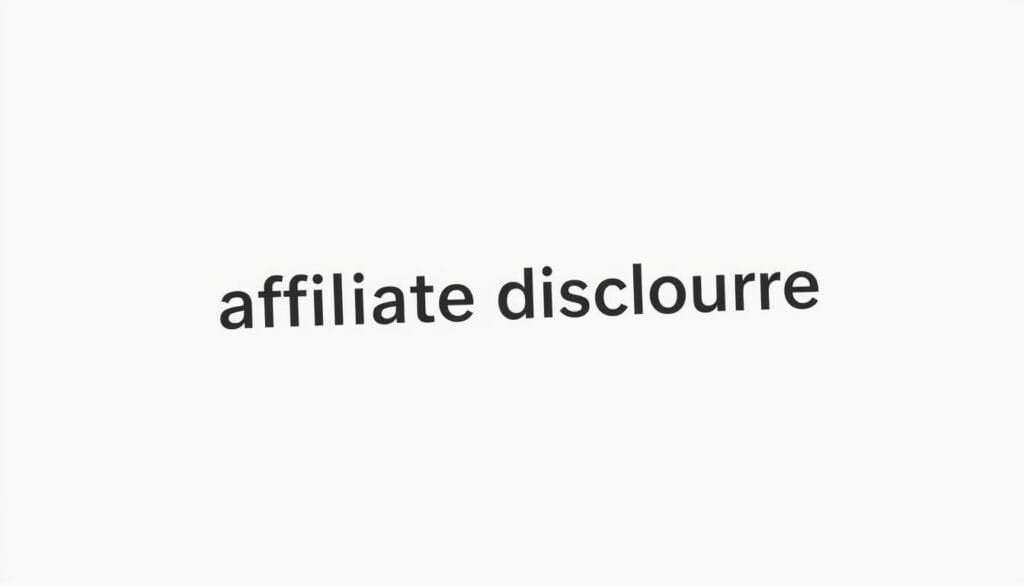63% of consumers say hidden monetization would make them abandon a brand immediately. That single fact shows how opaque monetization destroys ROI, reputation, and long-term value for brands and consumers alike.
We present a clear, step-by-step How-To that operationalizes Affiliate Disclosure & Ethics into scalable systems. Our playbook maps FTC guidelines, real brand examples, and repeatable practices so teams can act fast and stay compliant.
We believe transparency drives trust. When readers see straightforward statements near links, conversions and lifetime value rise. Poor practice invites fines, platform limits, and lost audience goodwill.
Our approach converts legal requirements into decisive rules of engagement for website and blog templates. We show placement, wording, governance, and analytics so leadership can audit and scale with confidence.
Key Takeaways
- Clear statements near links protect trust and lift performance.
- We follow FTC guidance and deploy plain-language requirements across content.
- Operational rules make compliance repeatable and auditable for brands.
- Transparency improves qualified traffic and reduces disputes.
- Every recommended statement is template-ready for website and blog use.
The trust and ROI problem in affiliate marketing today: why transparent disclosures win in the present landscape
When promotional ties are unclear, readers hesitate—and ROI falls fast. The FTC requires visibility where consumers decide, and platforms now remove noncompliant posts. That combination creates direct economic risk for premium brands.
We quantify the hidden tax: vague signals increase bounce, reduce time-on-page, and lower conversion efficiency when links and recommendations drive revenue on the page.
- Trust compounds ROI. When readers and an audience see clear practices, they spend time evaluating solutions and make informed choices that lift assisted conversions.
- Reputational arbitrage. Brands perceived as forthright strengthen relationships, lower acquisition costs, and earn pricing power.
- Compliance stabilizes growth. Clear, visible notices reduce complaints, chargebacks, and platform friction that can throttle posts and reach.
- Promotion alignment wins. Offers that signal user interest beat generic hype and boost retention.

| Risk | Immediate Impact | Mitigation | Business Outcome |
|---|---|---|---|
| Unclear links | Higher bounce, lower CTR | Visible, plain-language notices near links | Improved conversions, steady revenue |
| Platform removal | Lost reach, ad limits | Standardized posting rules and audits | Stable organic and paid distribution |
| Consumer complaints | Chargebacks, disputes | Clear calls-to-action and aligned promotions | Lower costs, higher lifetime value |
We recommend codifying these practices so teams and partners deliver consistent clarity across content. Transparency is not a cost center; it is a scalable advantage that outpaces competitors.
What the FTC requires for compliant affiliate disclosures: clear, conspicuous, and close to the triggering item
The FTC requires visibility: your notice must appear at the moment a reader evaluates a product or link.
Place the affiliate disclosure adjacent to the recommendation or affiliate link on the page. Do not hide it in a footer or an “About” section.

Placement rules that executives should mandate
Disclosures must sit where readers act—above the fold when possible and inline next to each link. Short, direct placement removes doubt and limits legal exposure.
Clear language and mobile visibility
Use plain statements such as “This post contains affiliate links.” The language must be simple and obvious on phones. Never hide terms behind hyperlinks or expandable blocks.
Social media and media formats
On social media, lead with #ad or #sponsored in captions and in-video text. Avoid vague tags and burying the notice among other hashtags.
Who must disclose and why
Anyone paid or compensated—bloggers, influencers, brand accounts, and program participants—must disclose at the time of endorsement. Non-compliance invites monitoring, fines, and platform limits.
| Rule | Where | Why it matters |
|---|---|---|
| Proximity | Inline, next to link | Ensures reader sees statement before action |
| Language | Plain text on page | Reduces confusion; improves trust |
| Mobile | Visible without expansion | Protects compliance on small screens |
| Social media | Lead caption or on-screen text | Meets platform and FTC expectations |
Model statement: “This post contains affiliate links.” Standardize this across products and formats and add it to QA checklists before publishing.
How to implement Affiliate Disclosure & Ethics across your website, blog, and social media
We codify visibility so every promotional link on the site is obvious, consistent, and measurable.
Website and blog posts
Above the fold: add a short notice at the top of each page and post so readers see it before scrolling.
Inline clarity: place a concise in-line disclosure next to each affiliate link to remove ambiguity at the decision point.
Dedicated page: link to a full disclosure page for context without replacing inline notices.
Social, email, and audio
Lead captions with #ad or #sponsored and repeat the statement in Stories, Reels, and live intros. For email and podcasts, state the relationship before the endorsement.
Templates and patterns
- “This post contains affiliate links; we may earn a commission.” — short CMS block.
- “Quick note: we may receive compensation from links below.” — social caption starter.
- Use tools like Pretty Links or Easy Affiliate to automate placement and tracking.
Good vs. weak examples
| Example | Placement | Why it works | Impact on readers |
|---|---|---|---|
| “This post contains affiliate links; we may earn a commission.” | Top of post + inline | Clear, simple language | Builds trust; reduces confusion |
| “Links may earn us money.” | Footer only | Vague and hidden | Erodes confidence; higher bounce |
| “#ad Check link in bio.” | Caption without inline | Meets social tag rules but hides context | Less transparent on mobile; lowers CTR |
Operational rule: integrate a simple checklist into publishing workflows so teams can make sure disclosures fire consistently across the site, posts, and social placements.
Operationalizing ethics: governance, training, and contracts that protect brands and audiences
Strong oversight converts legal risk into predictable, scalable growth for premium brands.
We centralize ownership of monitoring and create clear governance that scales. A single team owns audits, corrective actions, and the public statement that sets expectations for creators and partners.
Advertiser responsibility: document monitoring, retain timestamps, and run scheduled crawls to catch lapses before consumers or platforms do.
Onboarding, training, and spot checks
Onboard creators with a one-page guideline, role-specific training, and an onboarding checklist that compresses time to compliance.
Schedule periodic spot checks and automated scans. Keep logs and screenshots to prove remediation and protect consumers and brands.
Contracts and terms
Encode requirements in contracts: clear clauses for statements, platform rules, indemnification, and SLAs for remediation. Track commissions, gifted products, and other compensation so every promotion carries the right language.
| Mechanism | Purpose | Deliverable |
|---|---|---|
| Central governance | Reduce ambiguity; speed decisions | Owner, playbook, audit cadence |
| Onboarding kit | Fast compliance for creators | One-page terms, training module |
| Contracts | Align incentives; enable remediation | Disclosure clauses, indemnity, SLAs |
| Monitoring | Detect lapses early | Automated crawls, spot checks, logs |
Tools and workflows that make compliant disclosures scalable
Automation and analytics turn compliance tasks into measurable growth levers for premium brands. We build systems so teams can scale transparency without slowing publishing.
Plugins and link tools to automate placement
Deploy link utilities like Pretty Links to tag and surface notices adjacent to affiliate links. Easy Affiliate publishes guidelines to dashboards so partners see required phrasing inside their workflow.
These tools centralize URL management and make sure the right text appears on every post and page.
Analytics setup: track visibility and conversion lift
Measure impressions of the notice block, CTR on calls to learn more, and commission attribution. Correlate disclosure visibility with scroll depth, time-on-page, and assisted revenue to prove impact.
A/B testing placement to balance UX and conversions
Test above-the-fold versus inline near the link. Run experiments to find the placement that preserves trust while maximizing conversions.
| Capability | What it does | Metric | Outcome |
|---|---|---|---|
| Link plugin | Auto-inserts inline notices | Placement coverage (%) | Consistent rendering across site |
| Affiliate dashboard | Shows required phrasing to partners | Compliance events logged | Faster onboarding; fewer edits |
| Analytics dashboard | Tracks visibility and CTR | Impressions, CTR, assisted revenue | Data-driven placement decisions |
| A/B testing | Compares UX vs. transparency | Conversion lift | Optimized reader experience |
Operational rule: integrate alerting into the CMS to flag missing notices so editors make sure compliance is restored before publishing.
From compliance to competitive edge: proving the ROI of transparent affiliate marketing
A transparent notice can turn legal compliance into a measurable growth channel for brands. When readers see clear language near links, they feel informed and stay longer on the post.
Trust signals that move the needle:
- Lower bounce and higher time-on-page as audience confidence rises.
- Repeat visits and deeper relationships with content that reads as honest.
- Cleaner attribution of commission and better forecasting from explicit link labeling.
Case-style scenarios:
Example: A premium retailer standardized affiliate disclosures sitewide. The result: fewer disputes, more predictable commission payouts, and smoother post-purchase support.
Example: Simple, direct language next to product links reduced friction at checkout and increased net-new revenue while preserving compliance.
| Outcome | What changed | Business impact |
|---|---|---|
| Higher engagement | Visible, plain-language notices near links | Longer sessions; more pages per visit |
| Fewer disputes | Standardized statements across posts and products | Lower legal costs; smoother partner relations |
| Better forecasting | Clear link attribution and tracked phrasing | Improved commission predictability; smarter budgets |
Strategic point: Treat transparent practices as a growth lever. When we measure, optimize, and communicate disclosure rules, transparency becomes a durable moat that elevates brand equity and marketing ROI.
Conclusion
Clear, repeatable disclosure practices convert regulatory work into predictable revenue engines for marketing leaders. Transparent statements build trust and make content an appreciating asset on your site.
Use a short disclosure statement near every link—for example, “This post contains affiliate links.” Place it inline, mirror it across media, and keep language plain so readers act with confidence.
Deploy templates, automate placements for affiliate links, and instrument analytics to track engagement and commission lift. Align creators to a single source of truth, enforce reviews, and keep living guidelines for your blog and partners.
Act now: Book a Macro Webber consult or request our Growth Blueprint to operationalize compliant disclosures in 14 days. Limited Q4 slots—elevate trust, quantify ROI, and lead your category.



